My first glimpse of Macchapucchare confuses it with clouds. Takes a few seconds for it to register that what I am seeing is a huge snowy peak. This sacred mountain that has never been climbed is also known as Fishtail for its peculiar shape. Below it is a massive wall of granite.
Almost unreal in their sheer size and presence, the Himalayas are certainly the highlight of any trip to Nepal. Seen at dawn in the pink and golden light, they have a mystic quality to them and in the silvery glow of the evening, they invite one to dream.
On most days the evening and morning skies are crystal clear. It is only around 10 or 11 that the clouds begin to rise from the valleys enshrouding the mountains in mist.
It is no wonder that climbing expeditions have very specific windows of time in which to attempt their ascents.
In the folds of their valleys are little villages cut into the mountainsides where life unfolds at a slow pace.
On the terraced hills, small herds of yaks, cows, goats and sheep graze peacefully ringing their bells as they move from one field to the next.
Yellow blankets of mustard color the terraces with an occasional burst of pink from an ancient cherry tree.
Golden stalks of barley sway in the breeze.
The steps that ascend the mountain are steep and made of a silvery stone that shines brightly in the sunlight. These are the roads used by the villagers to access their fields and other villages nearby and to carry their loads of provisions either in big baskets hung by a strap over their heads or on the backs of mule or oxen.
Here and there are patches of dense mossy forest, the magical kind from Lord of the Rings.
Little streams run through them nurturing the tall rhododendrums that bloom brightly in spring.
Now they are dark and lush…
with a ground cover of tiny flowers, ferns and mosses.
This is the land of the langurs, the red pandas, Himalayan black bears and snow leopards. A girl in our trekking group spots a paw print of a leopard on one of the rest stops.
Our group consists of 11 adventurers of different ages and nationalities, three guides and a cook, and four porters. Guides in Nepal are mostly Sherpas, the mountain people. This is how they feed their families and often save money to later invest in a business.
Sarki Sherpa, our guide in chief, is a good looking 32 year old who splits his time between trekking and volunteering at a school where he tries to bring awareness to such issues as trash, pollution and the importance of self sustenance. In between wide smiles he makes sure we drink enough water and are not feeling sick. He opens his daily briefings with – “Pee is clear?”
The Mardi Himal trek begins in the little village of Kande, one of the lucky ones to have road access. The first part of the climb is brutal, the lungs aching for more oxygen and the muscles straining at each step. Switching into yogic breath I am able to slowly expand the lungs, feed the muscles with oxygen and soon everything becomes more enjoyable. Every hour we take a break for a few minutes to drink water and soak in the scenery.
On the move I prefer to hang in the back with Saroj, away from the lively chatter of the crowd.
Saroj and his cousin Min are also kayaking and canyoning guides and often spend several months working in Japan as well as Nepal.
Here like Sarki they are hired by Himalayan Quests owned and operated by a family member. This small but well run company offers off the beaten track excursions and provides a comprehensive service that leaves little to be desired.
Around midday we stop at a camp to have lunch. The camps usually consist of one or two guesthouses with double or quadruple rooms and are situated in spots where the views are stunning.
The menus which contain all possible combinations of eggs and potatoes and dahl bhat, also have such western dishes as pizza and pasta, Nepali style that is…Our guides make sure we have some fruit and plenty of tea with our meals.
The 2 or 3 hour long afternoon climbs take us past rows of colored prayer flags, buddhist stupas, and shrines that merge old religions with Hindu dieties.
And then another camp and much needed rest.
Here after an outdoor yoga practice, fully dressed in hats, gloves and down jackets, we sit down to a warm dinner huddling around the chimney stove.
The nights are bright with a full moon that slowly wanes. As it sets, the stars become almost reachable. Just before dawn they seem so big.
And then as the light creeps up on the horizon it reveals the endless valleys below tingeing them with orange, pink and purple tones. Breathtaking!
As we climb higher the golden tundra grasses cover most of the mountainside in between large boulders and an occasional clump of bushes.
Tiny Alpine like flowers are everywhere.
As the ground begins to show patches of snow, the mountains loom large, Mardi Himal just below Fishtail whose beauty makes us repeatedly pause to take its photo.
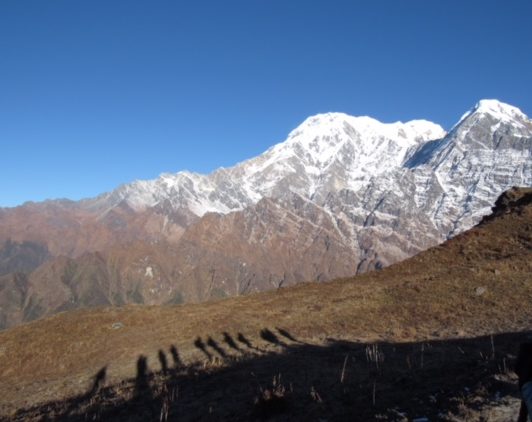 Our final ascent to the 4500m basecamp starts way before dawn, our headlamps shining brightly on the steep path.
Our final ascent to the 4500m basecamp starts way before dawn, our headlamps shining brightly on the steep path.
Sunrise catches us just below the base camp marker and illuminates our smiles for the photo op.
The broad mountain panorama also includes the Annapurnas as well as Dhaulaghiri which at 8167m is one of the 14 eight-thousanders. A lone hang glider hovers in the foreground suspended in mid air.
As the mist rises, a cold wind starts to blow. Soon small pellets of hail begin to sting our eyes.
Time for a stop at a little tea shack to warm up and dry out.
In the late afternoon, the clouds part once again presenting us with an amazing sunset.
The mountain gods are smiling upon us.



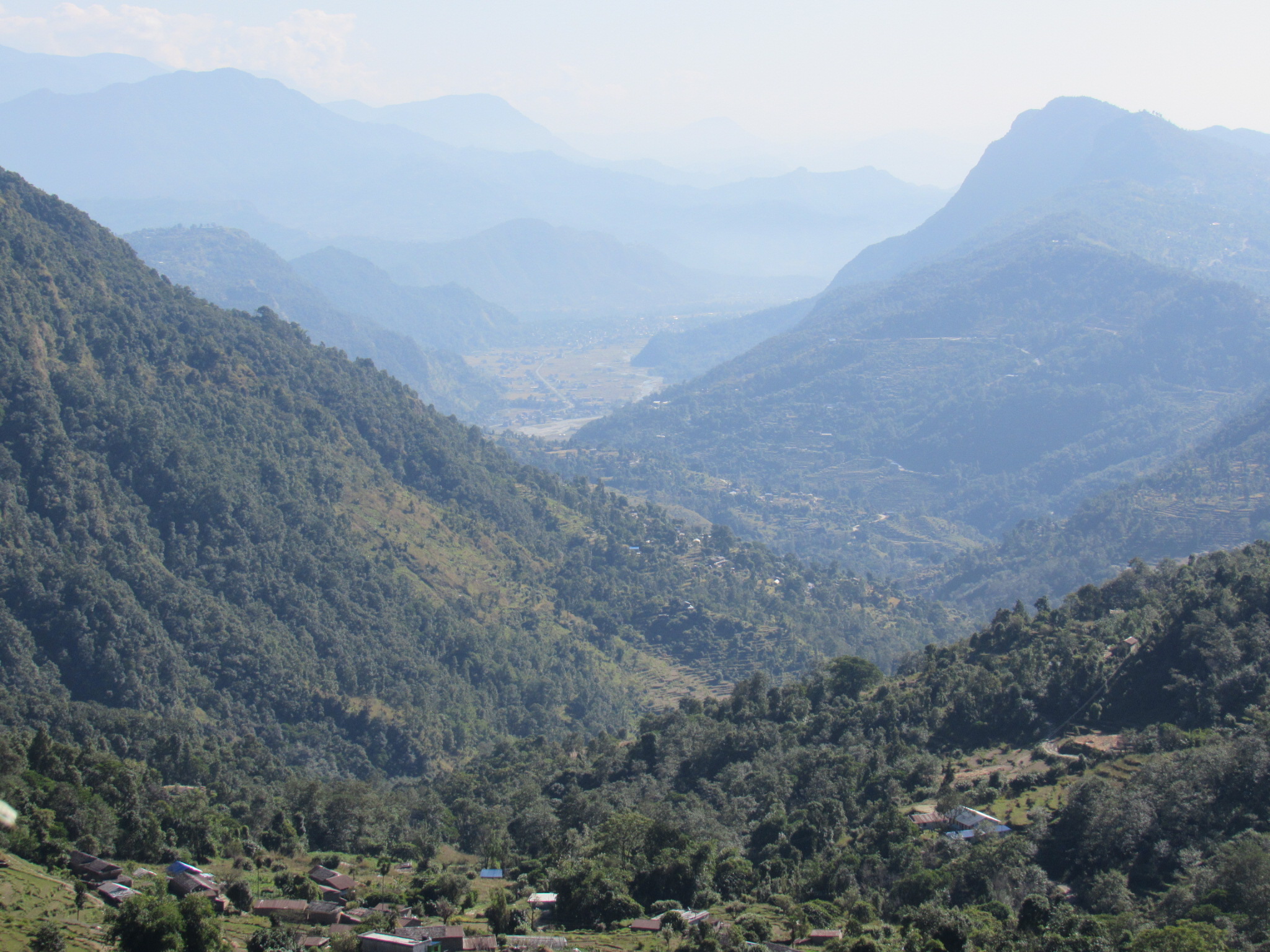
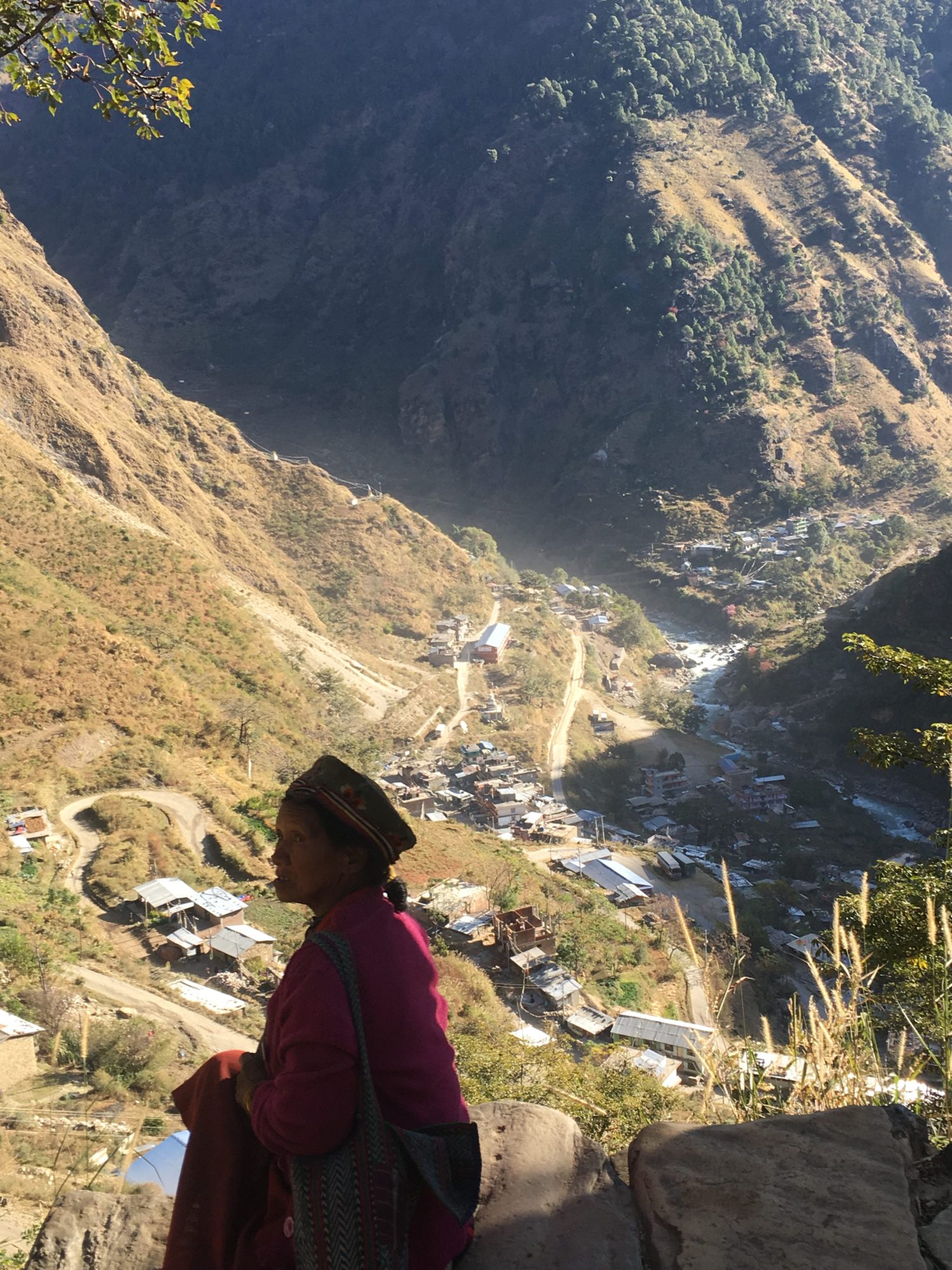
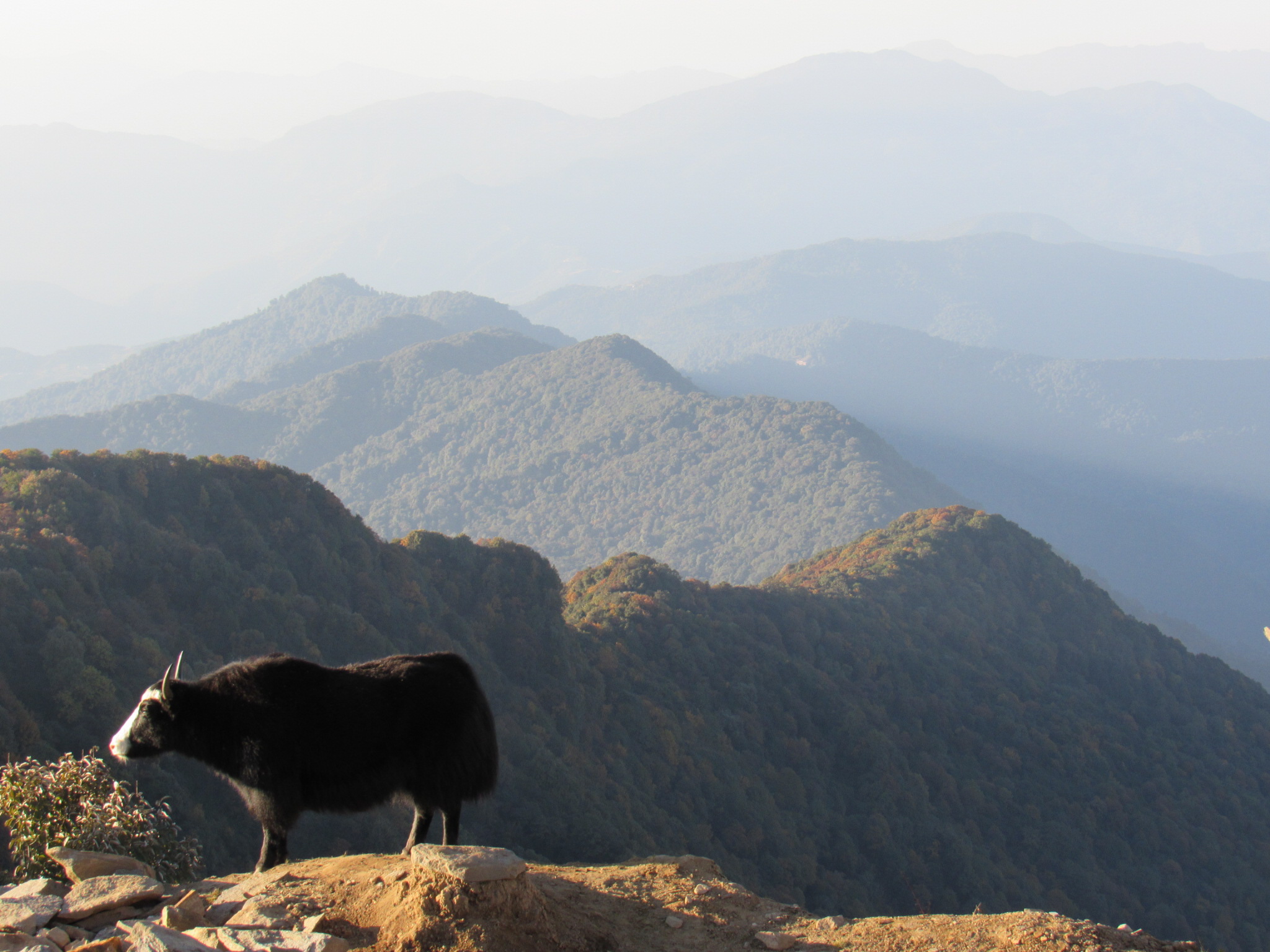
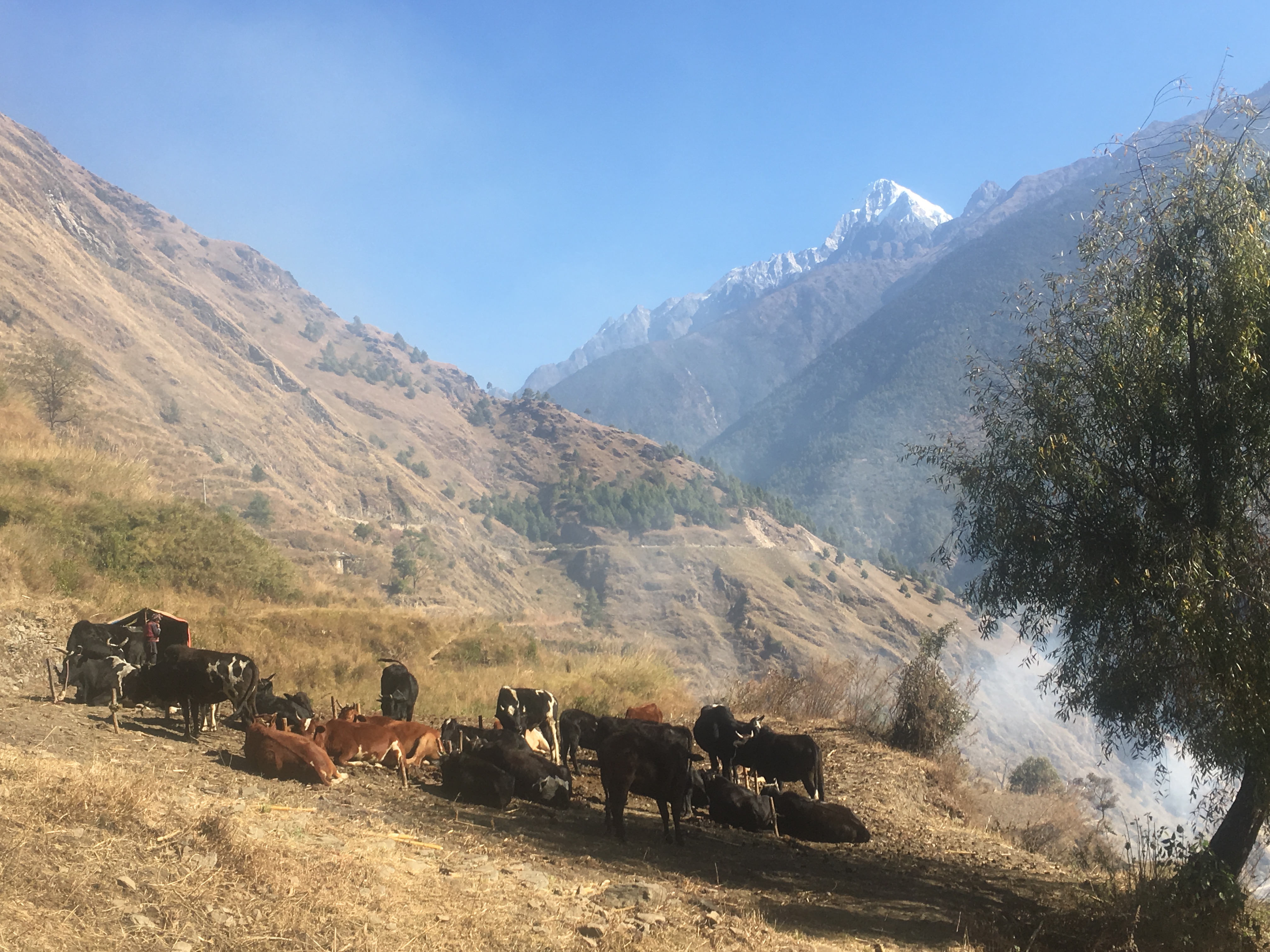
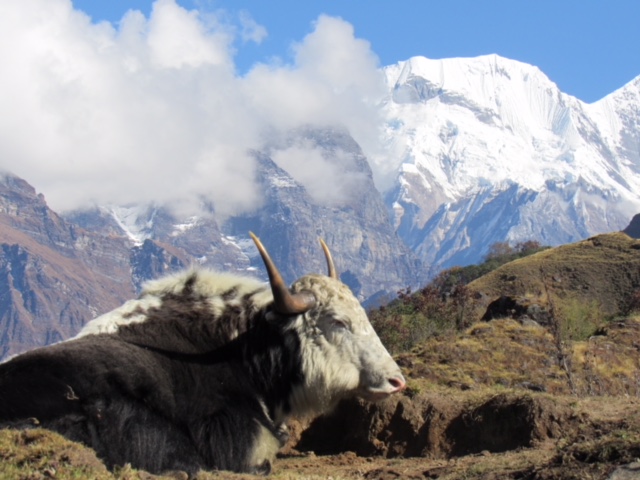
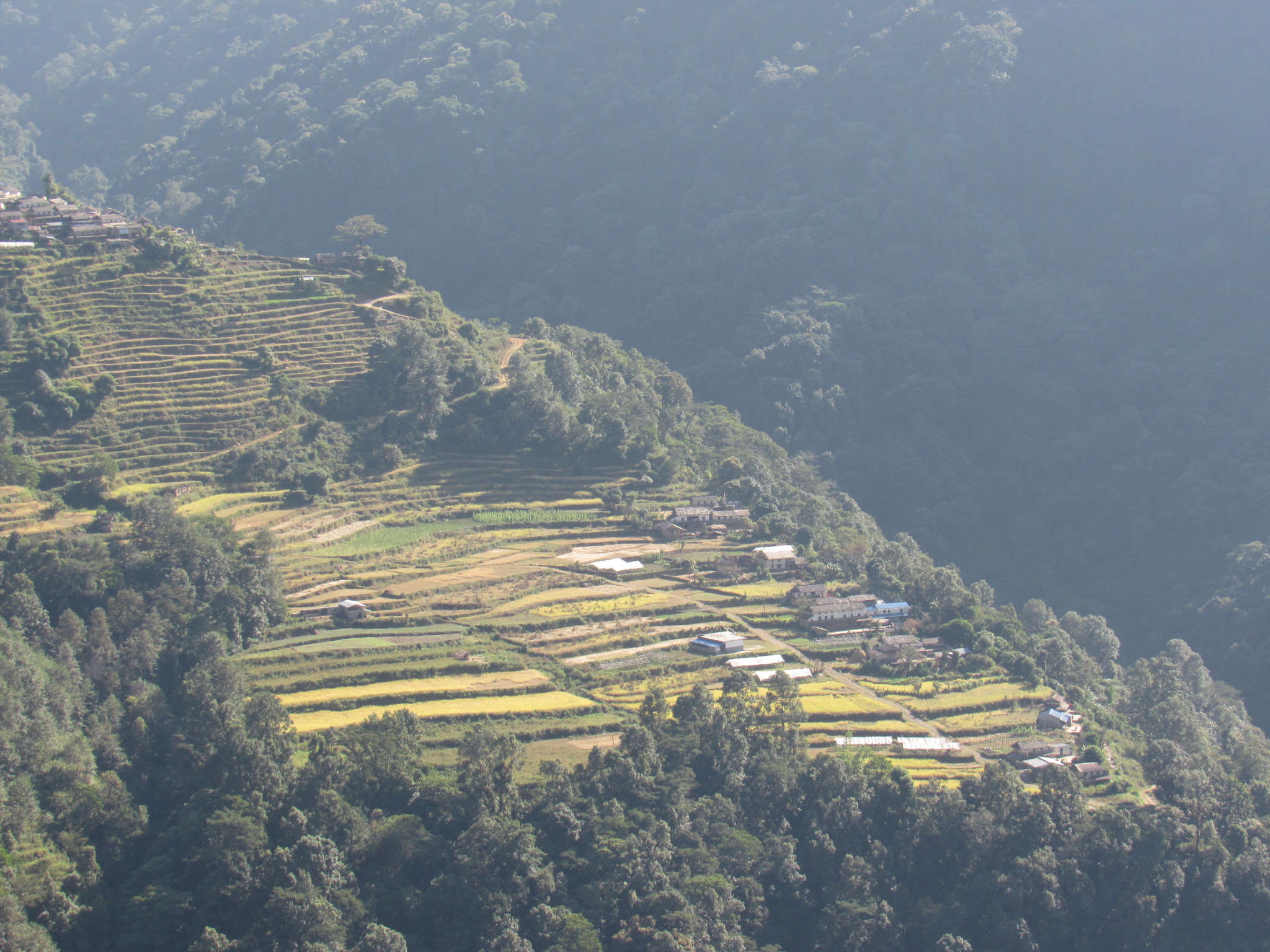

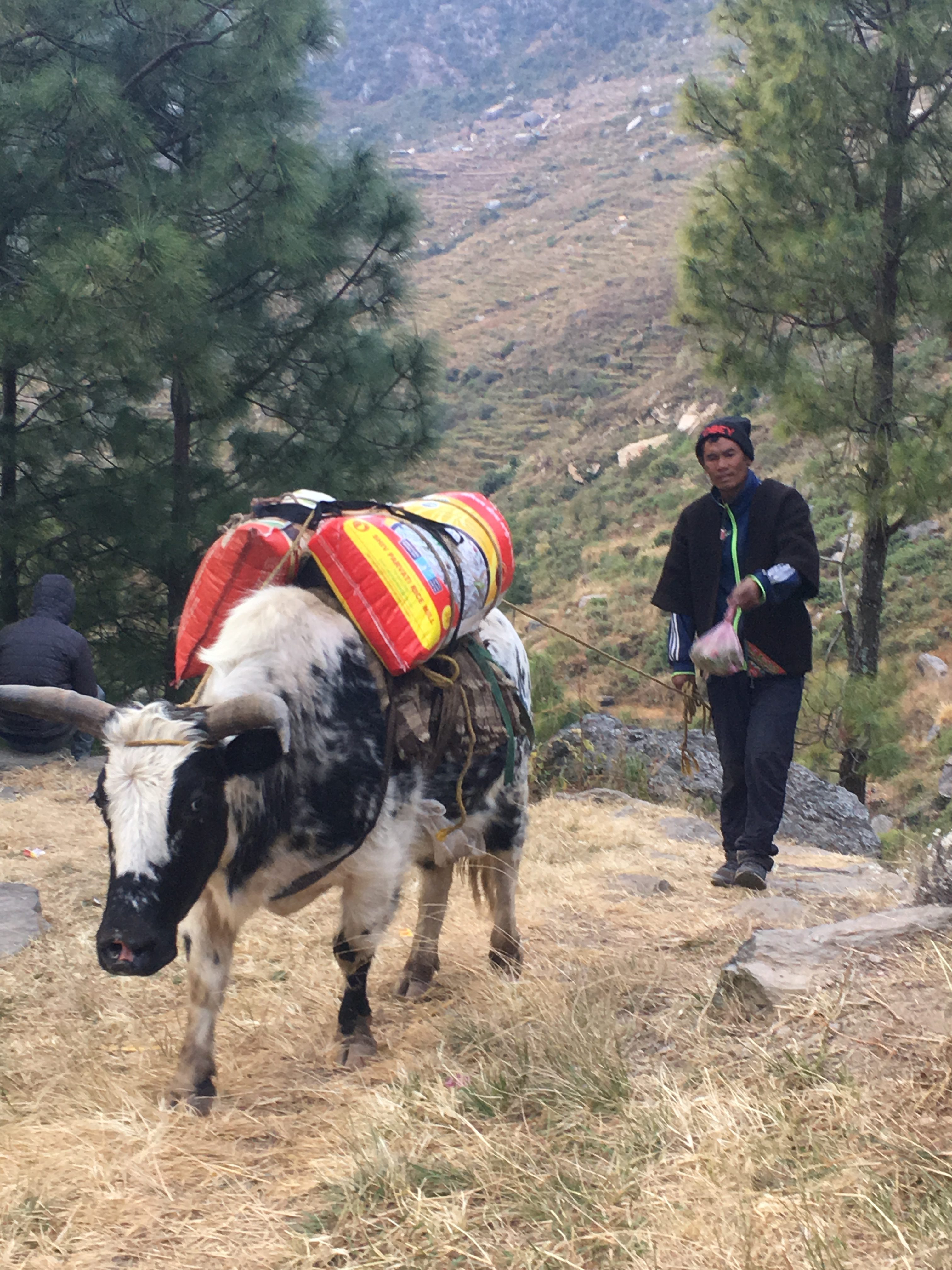
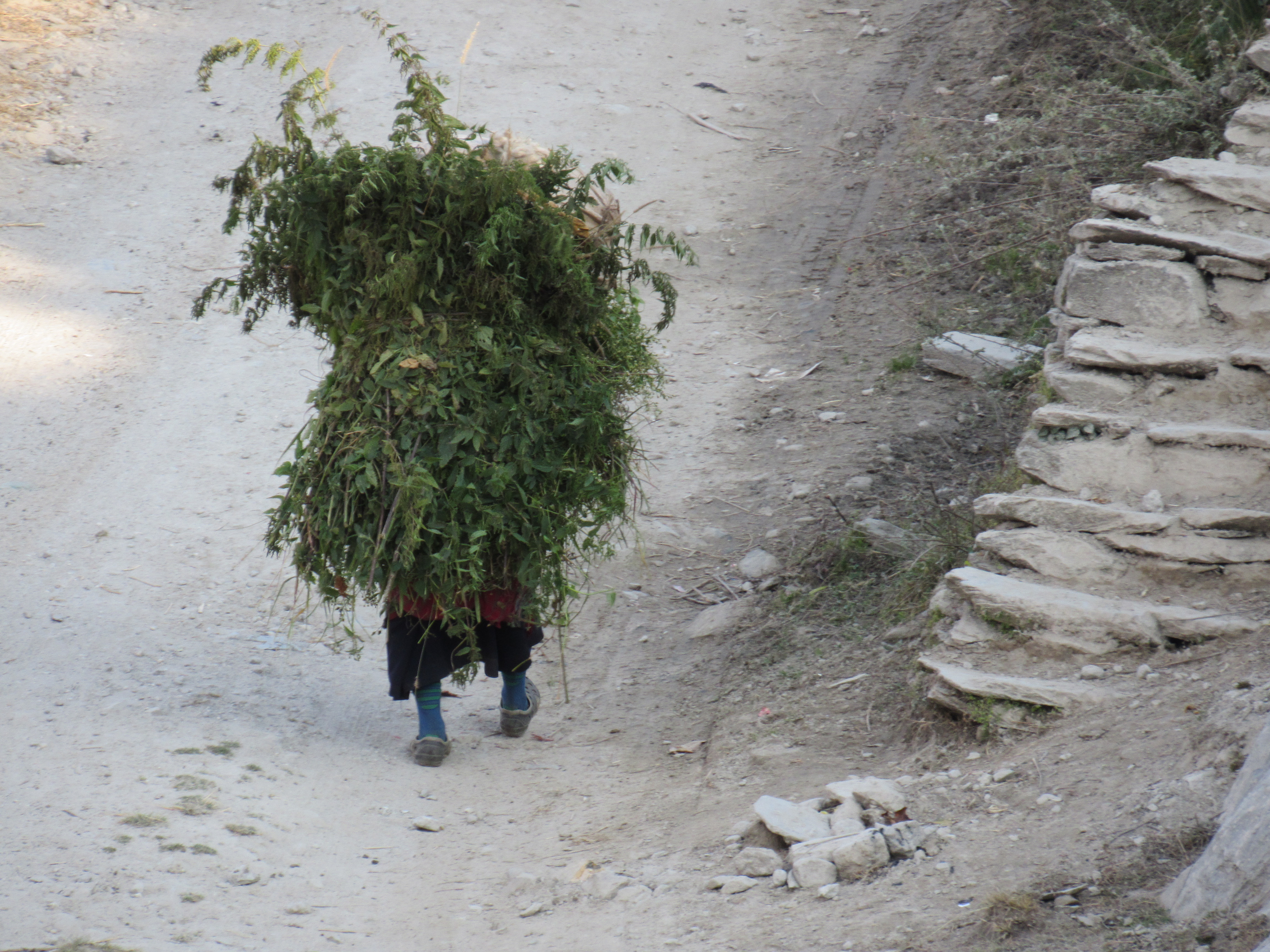
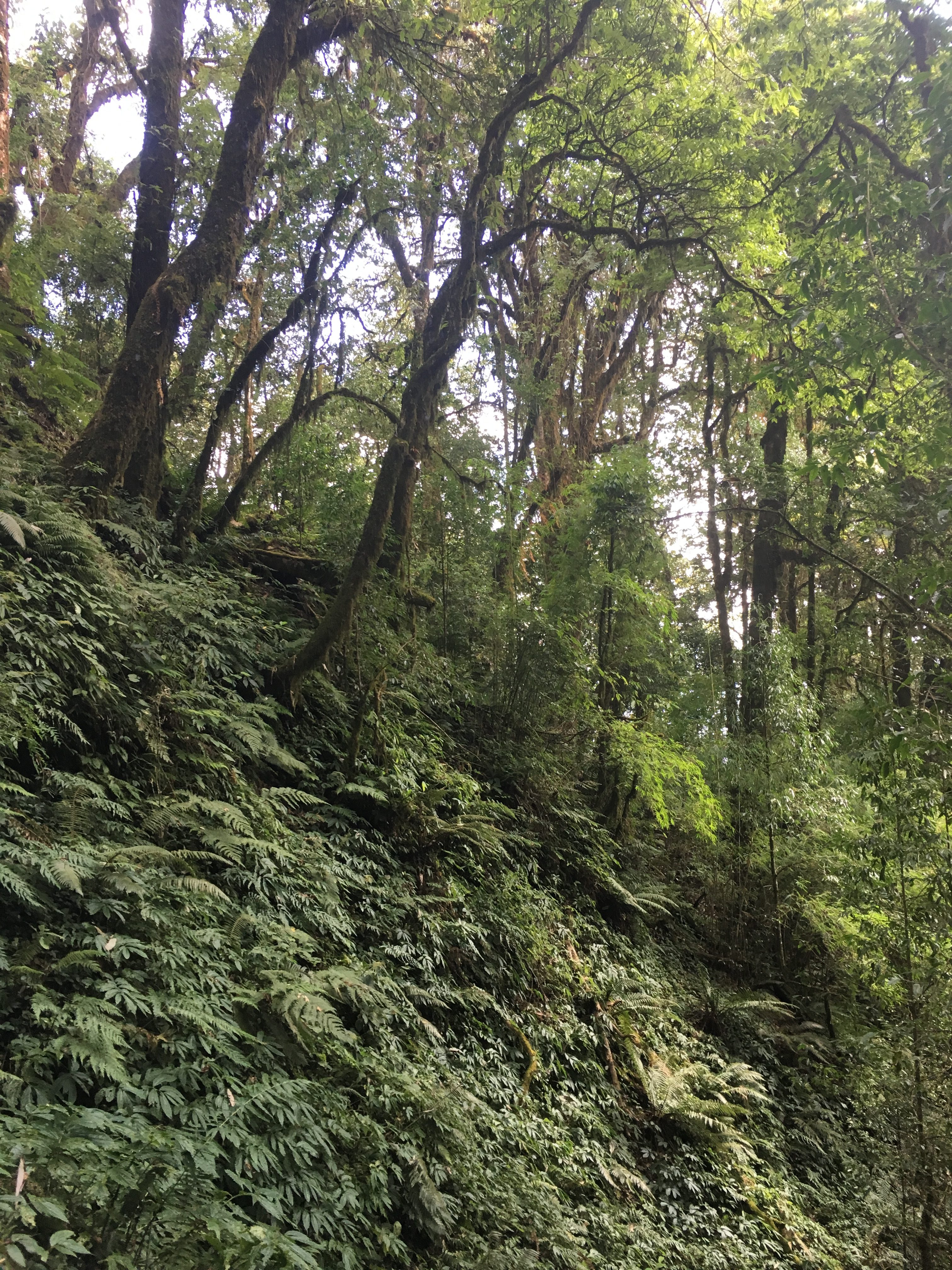




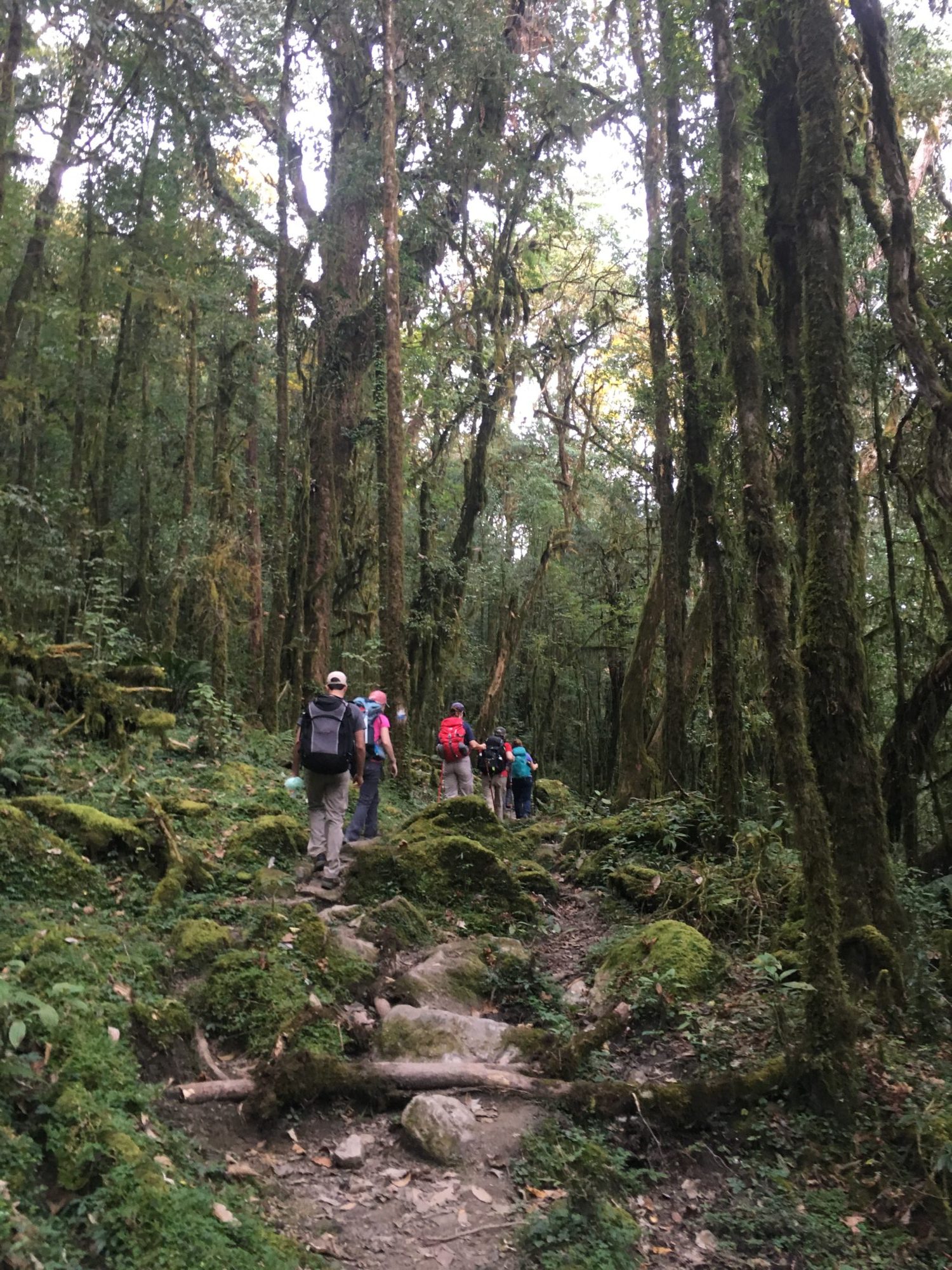
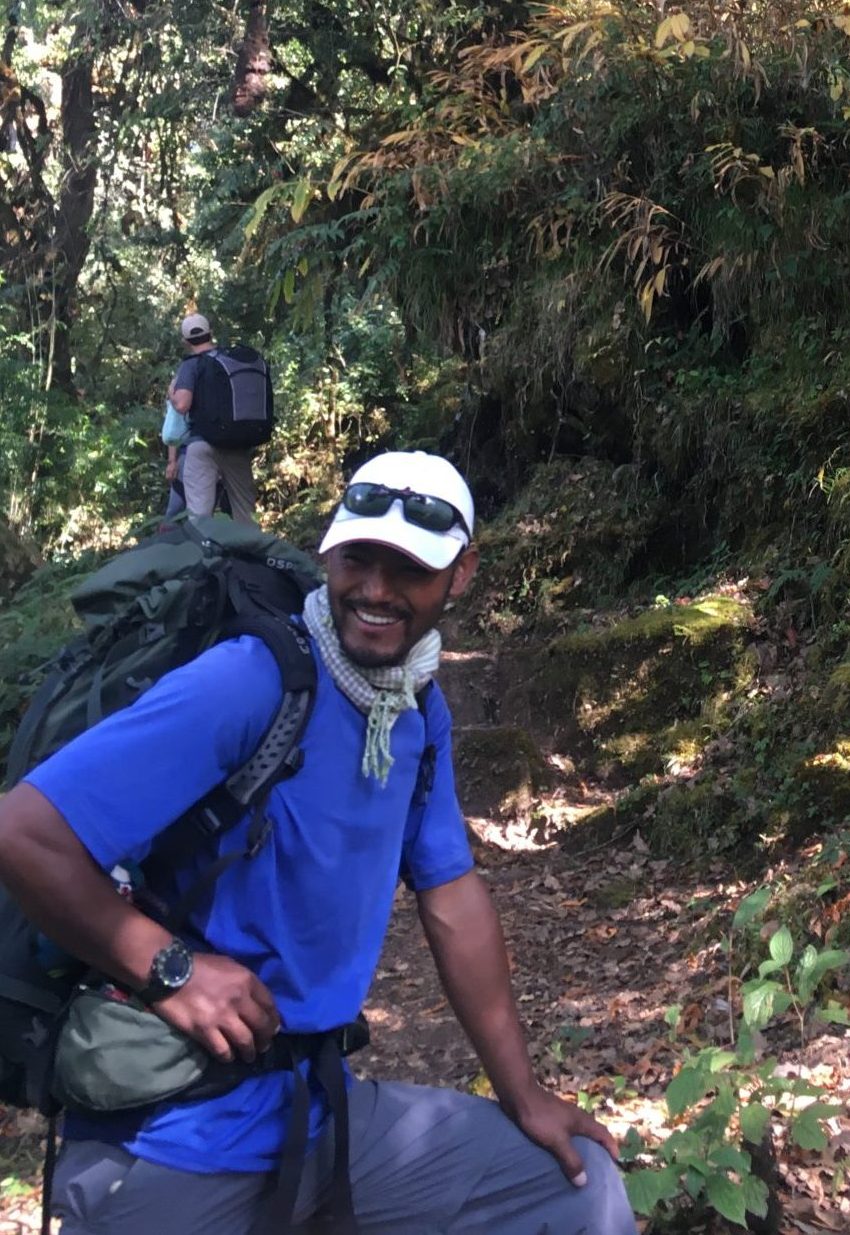
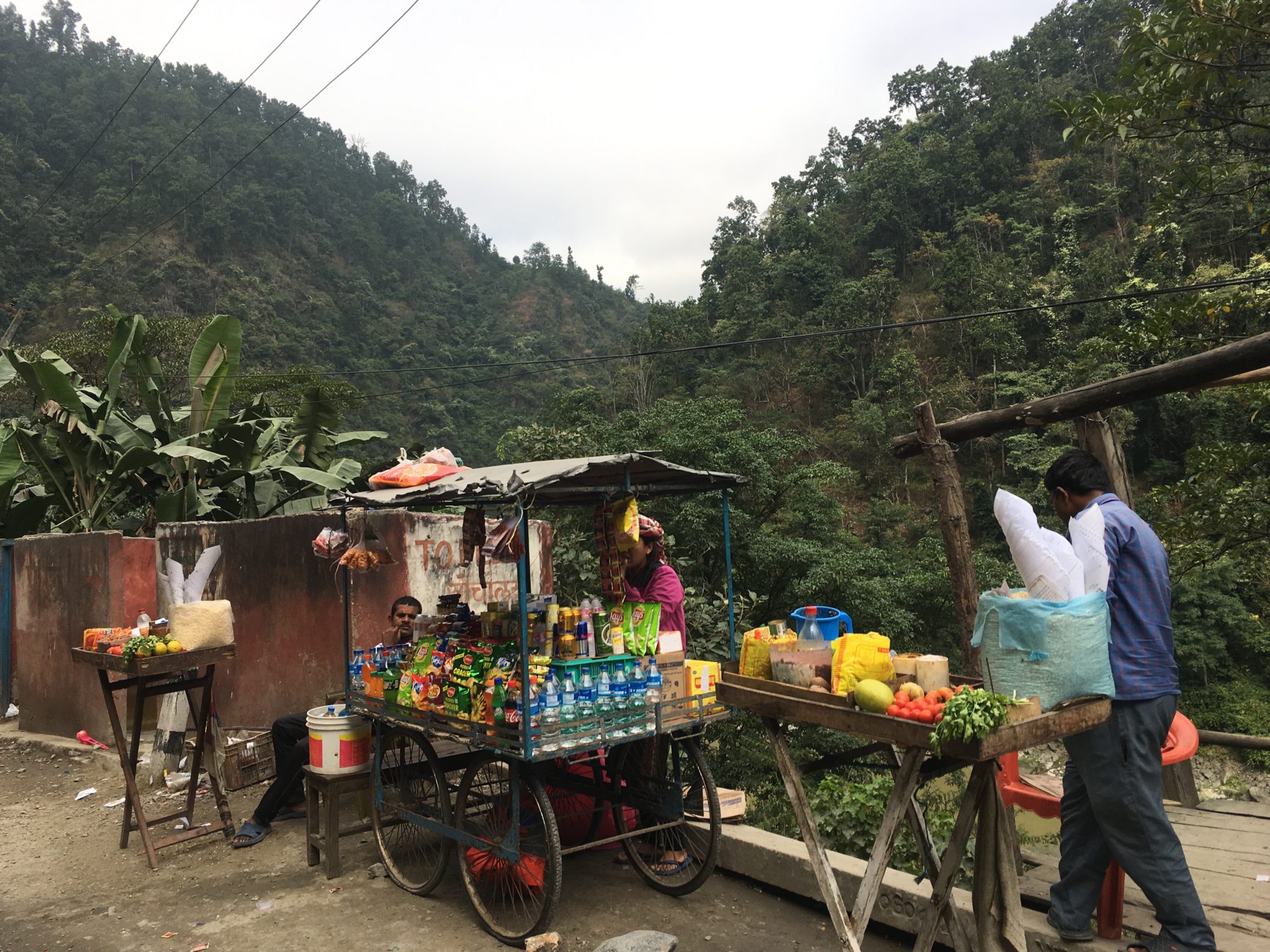
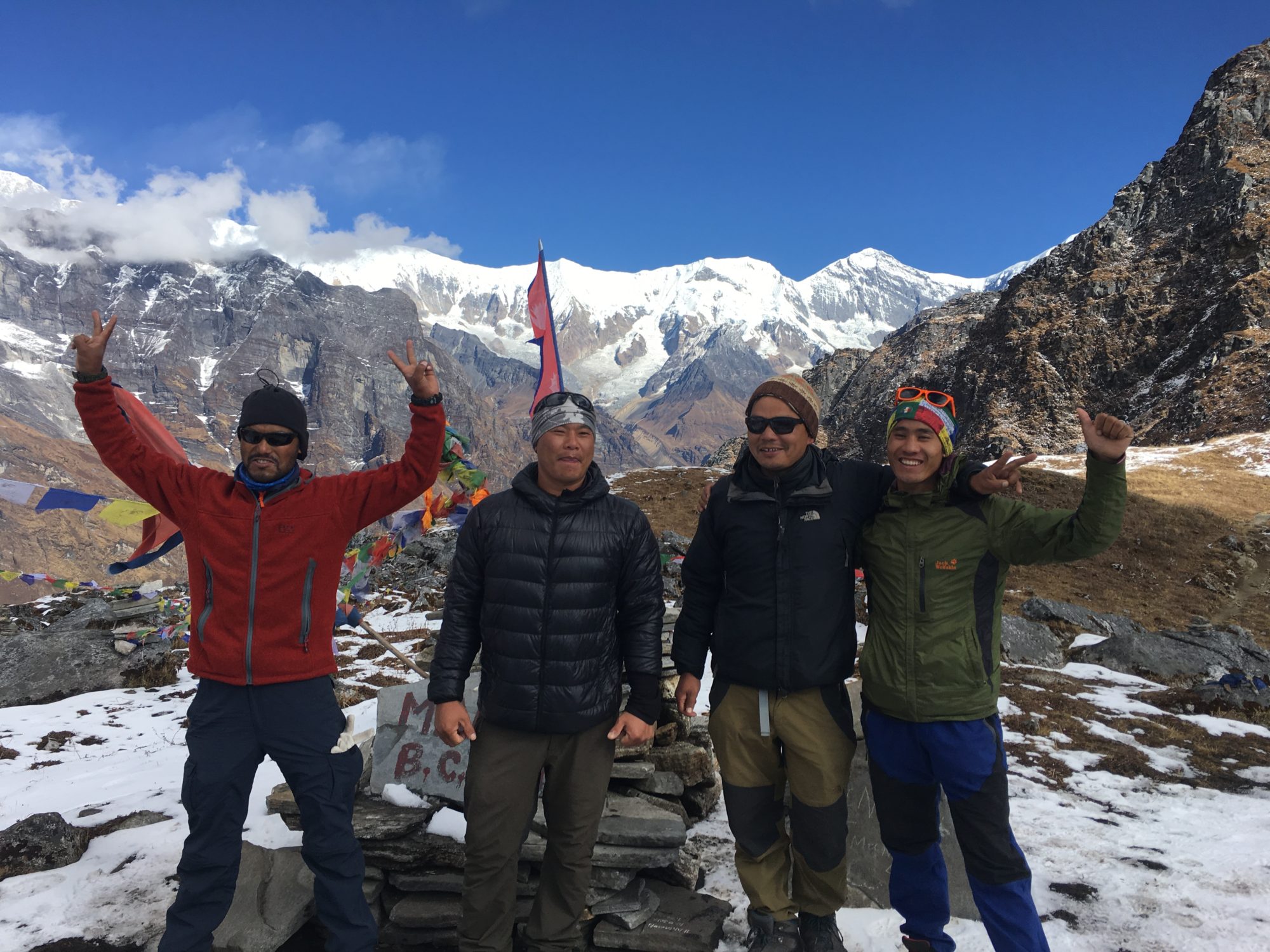


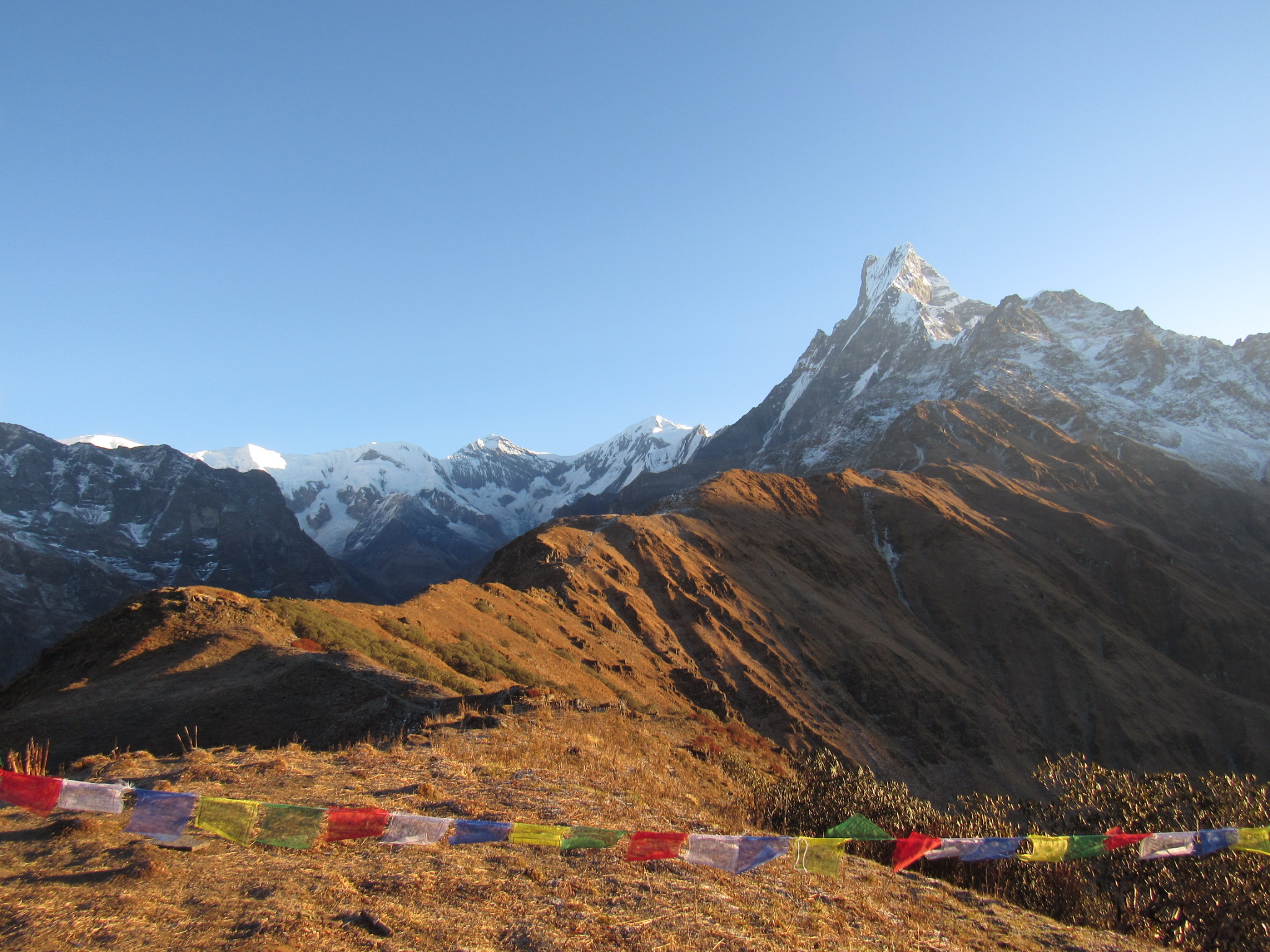
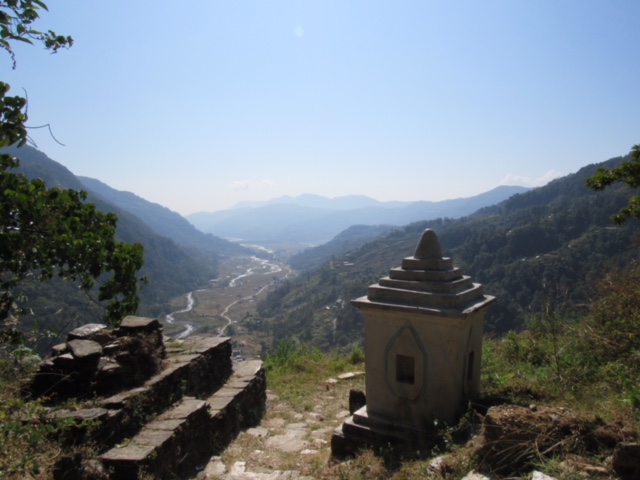
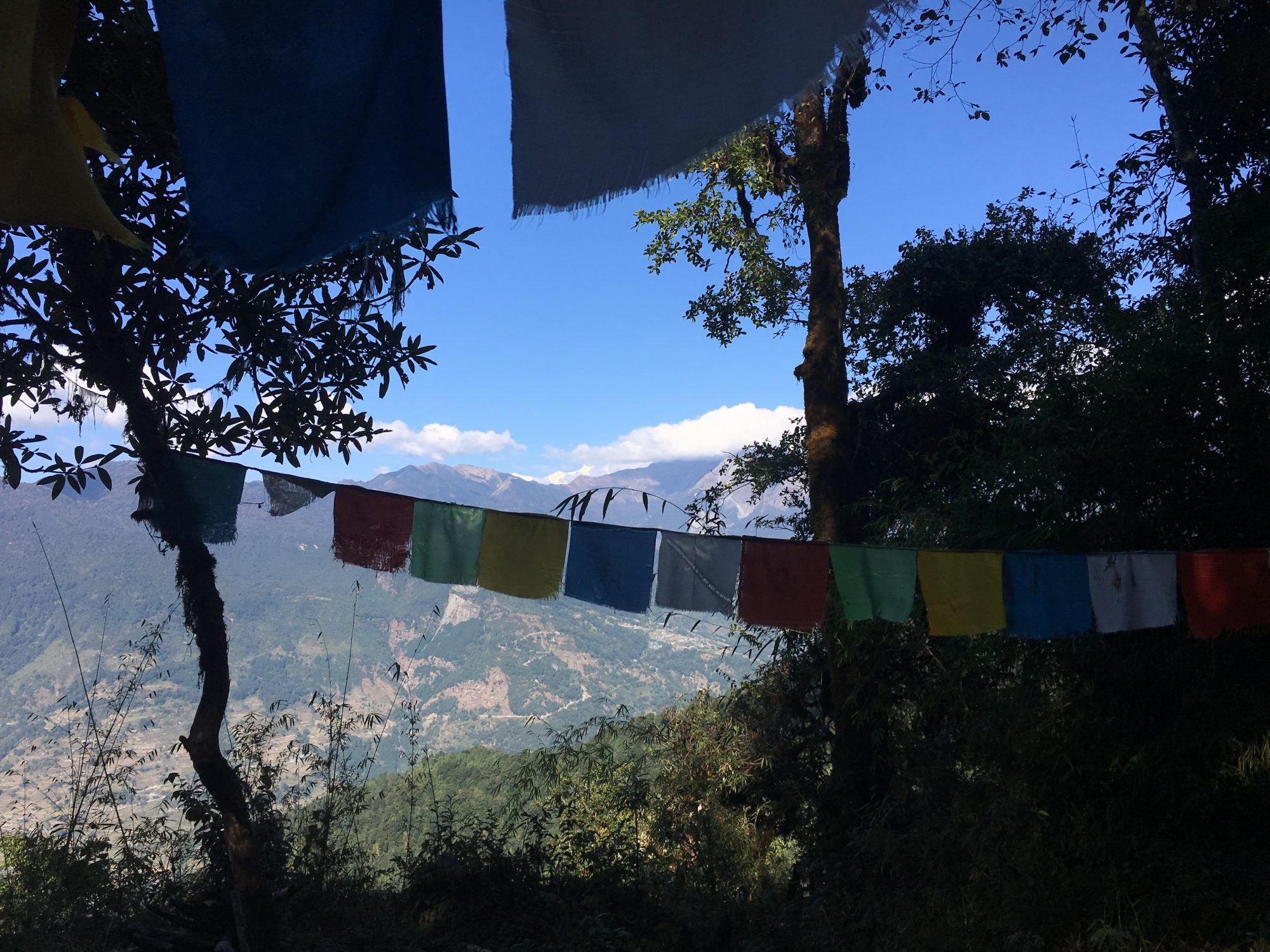
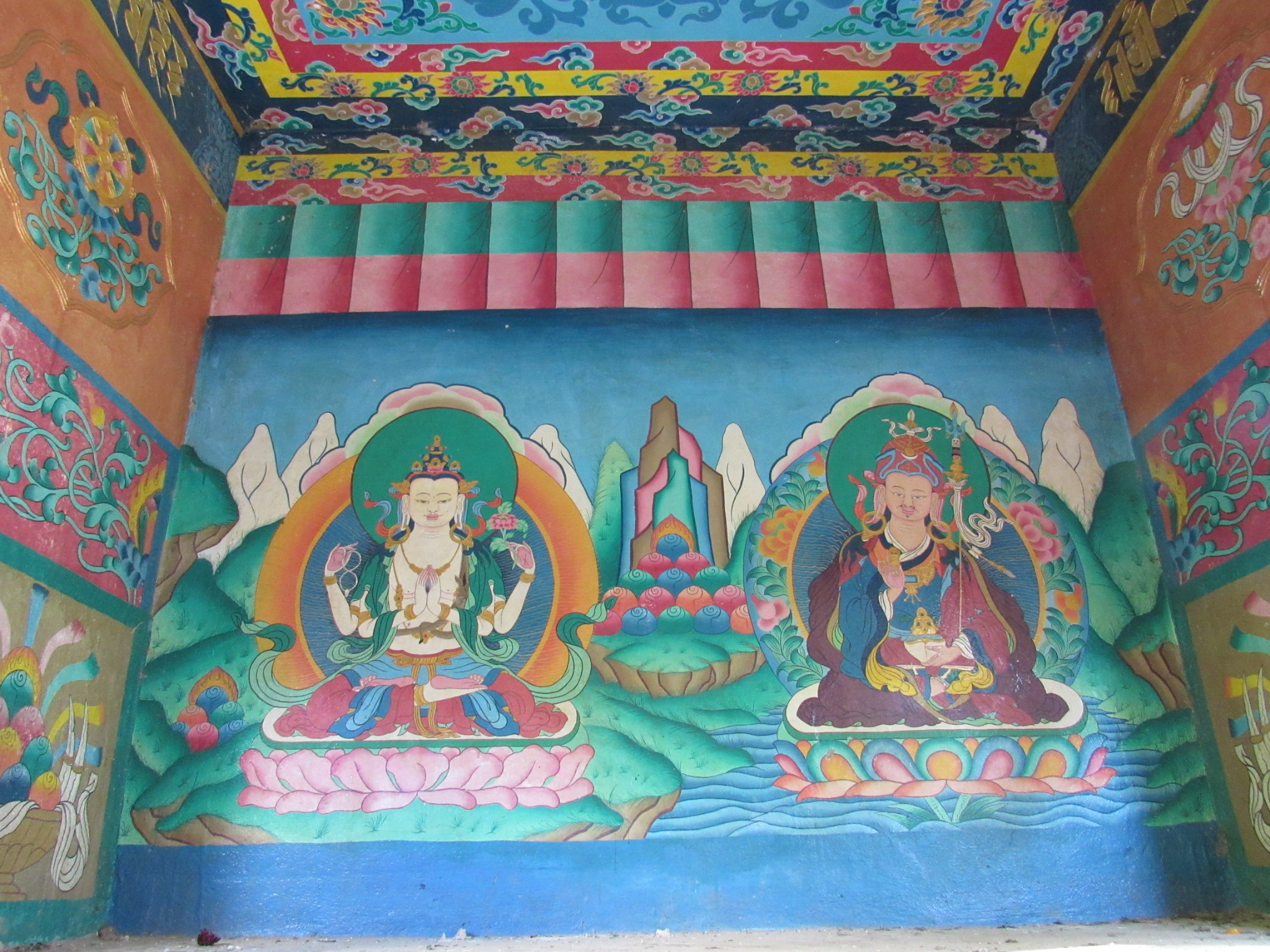
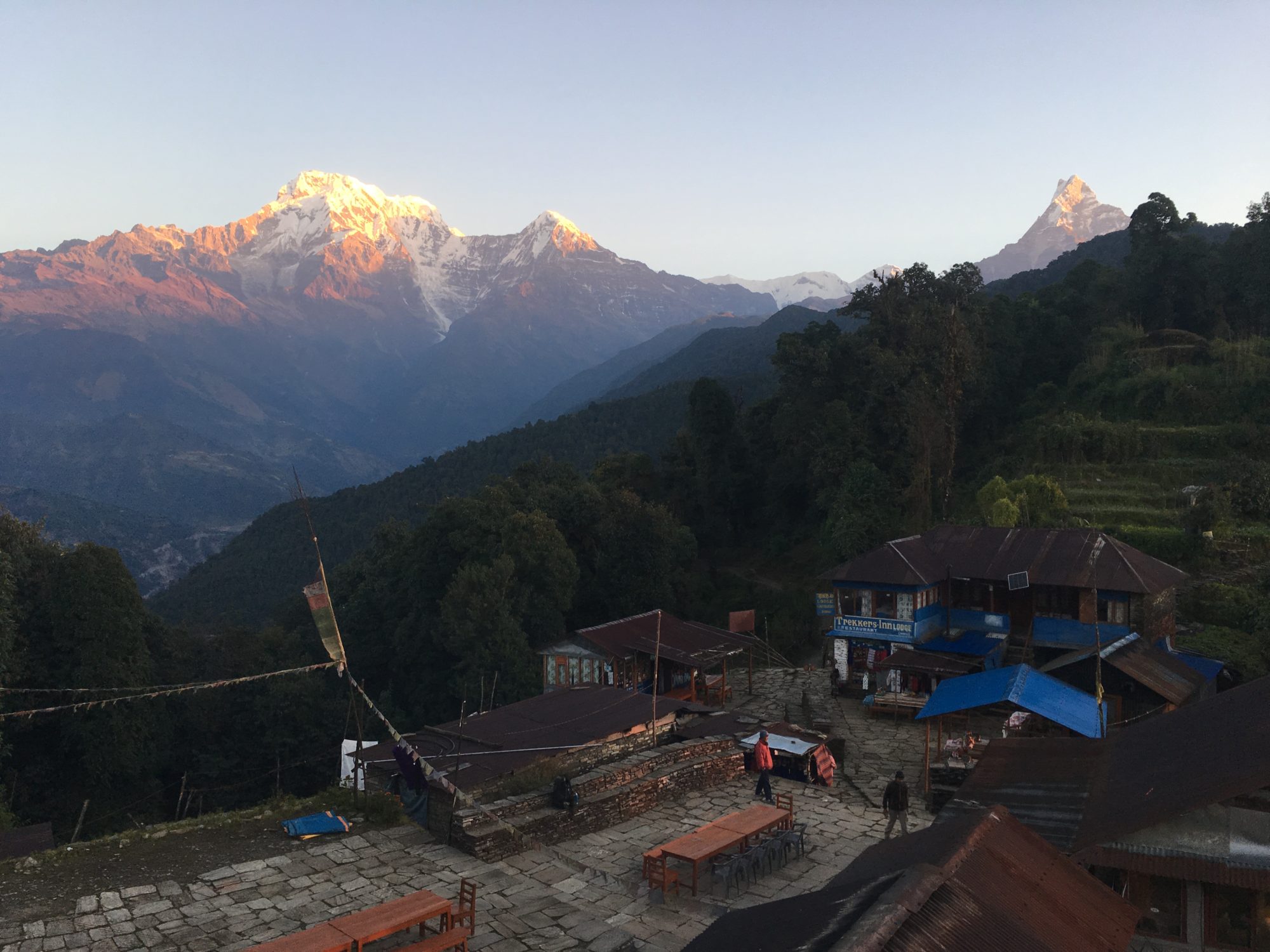
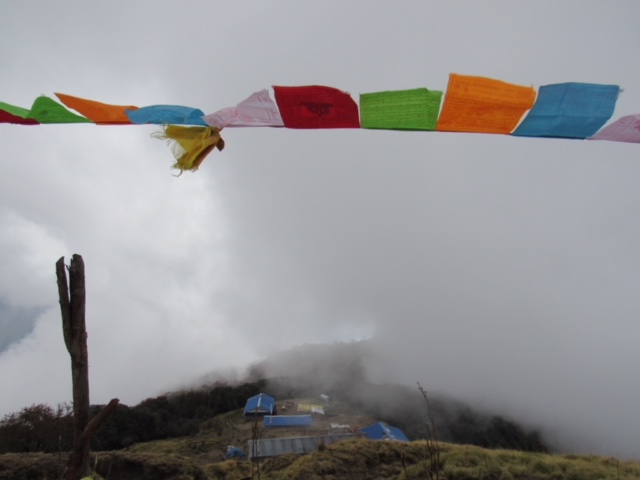
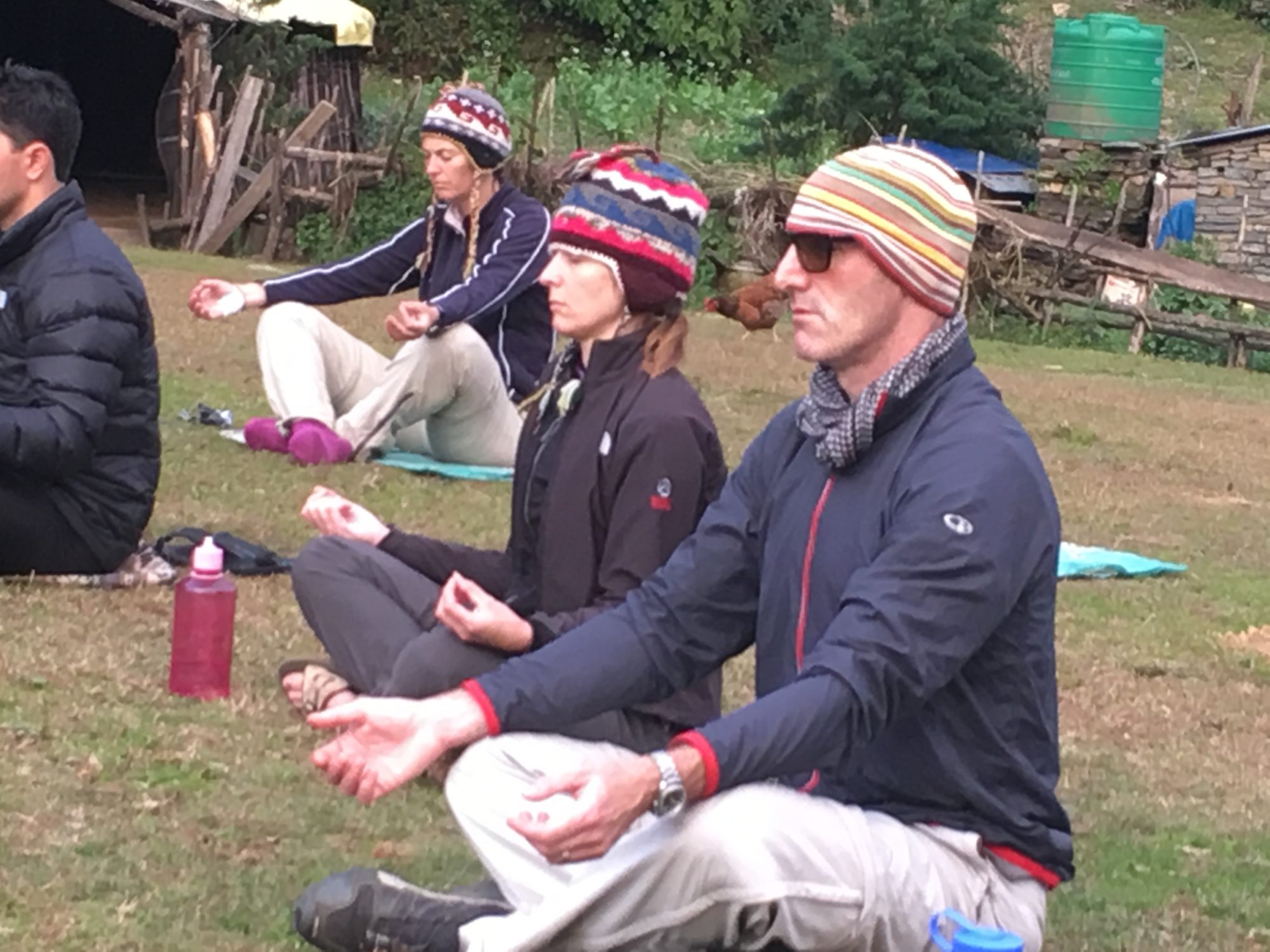
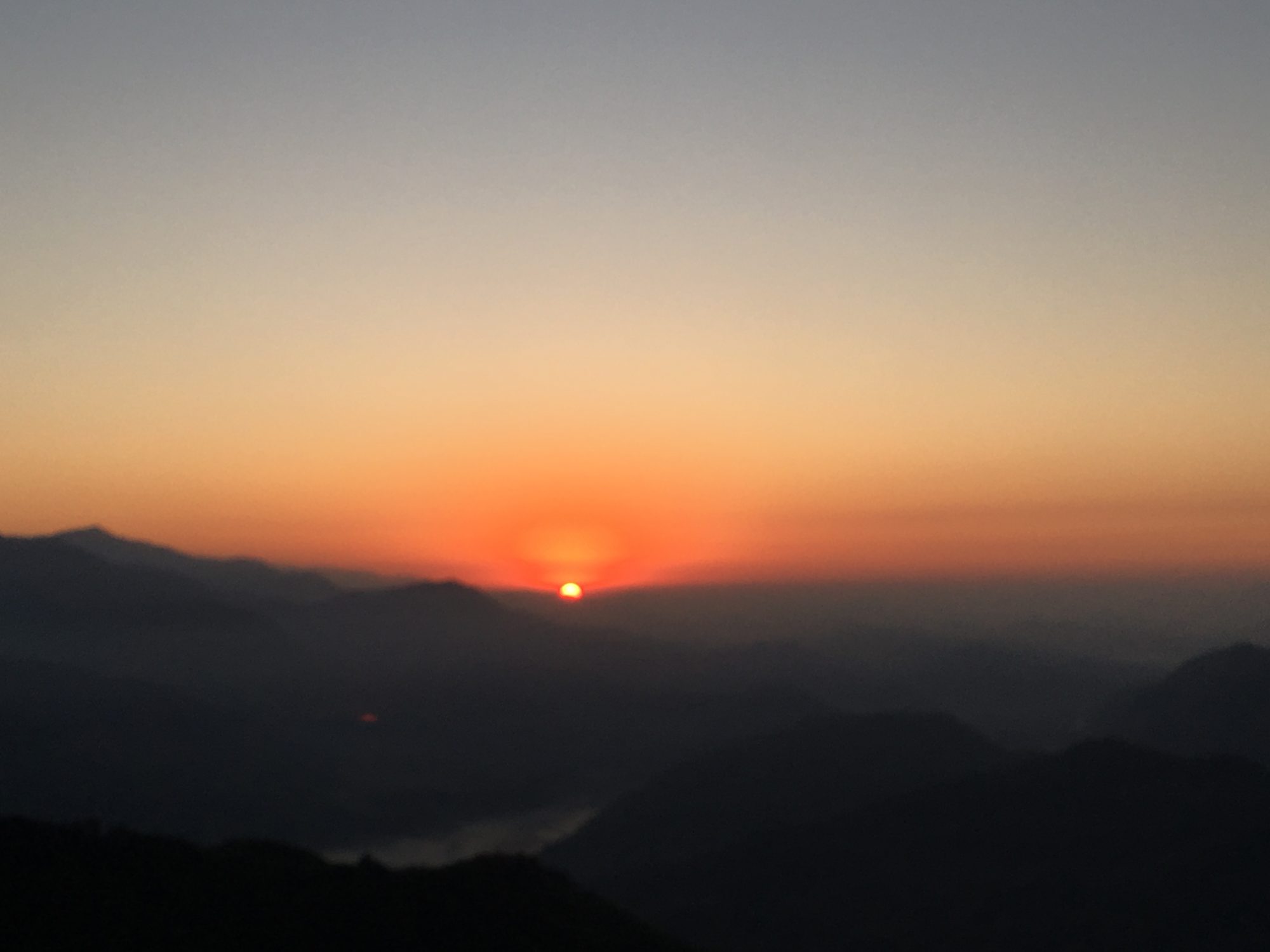
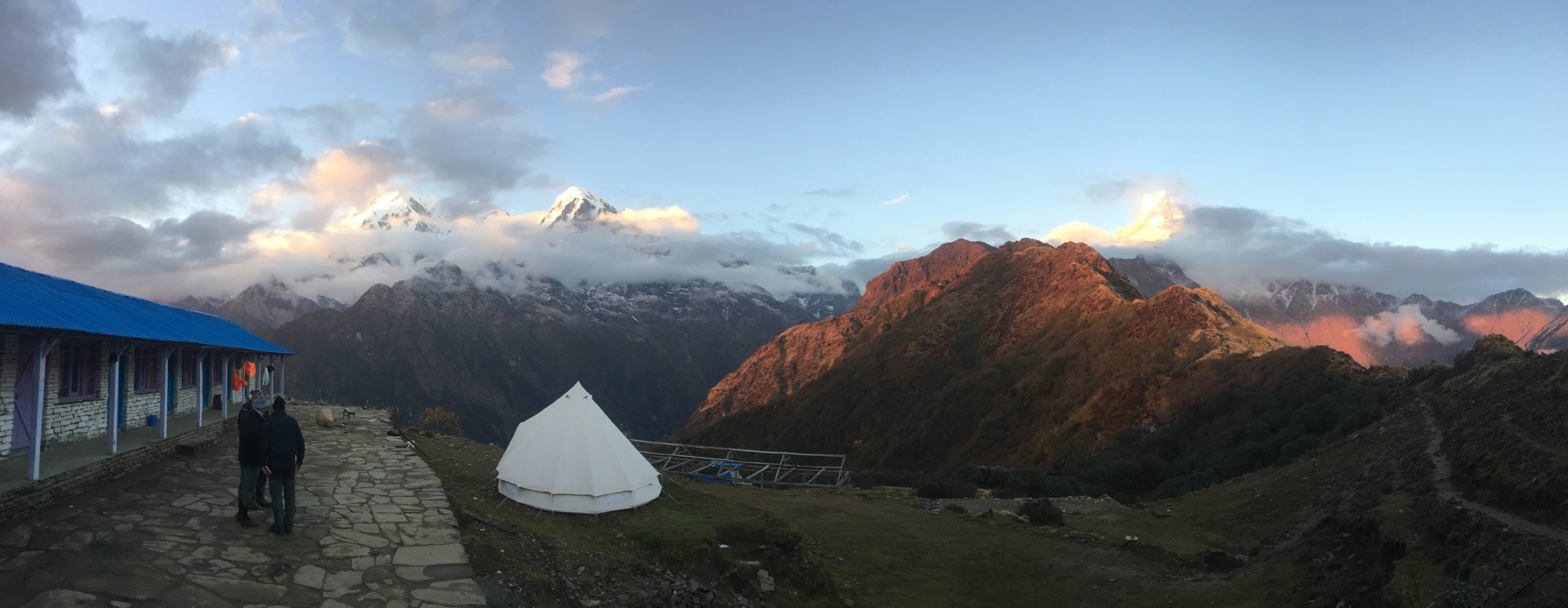


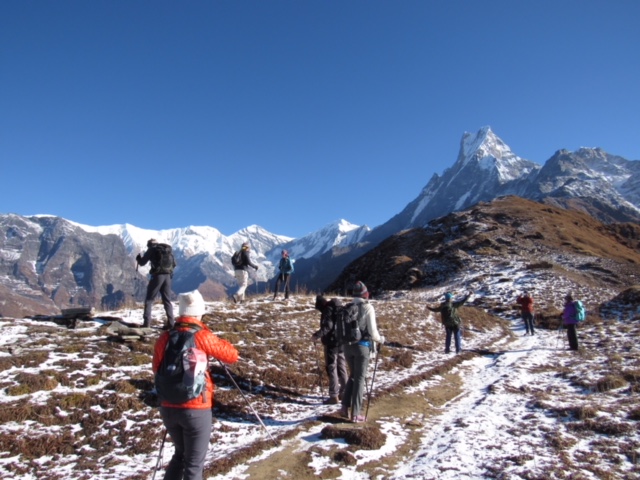
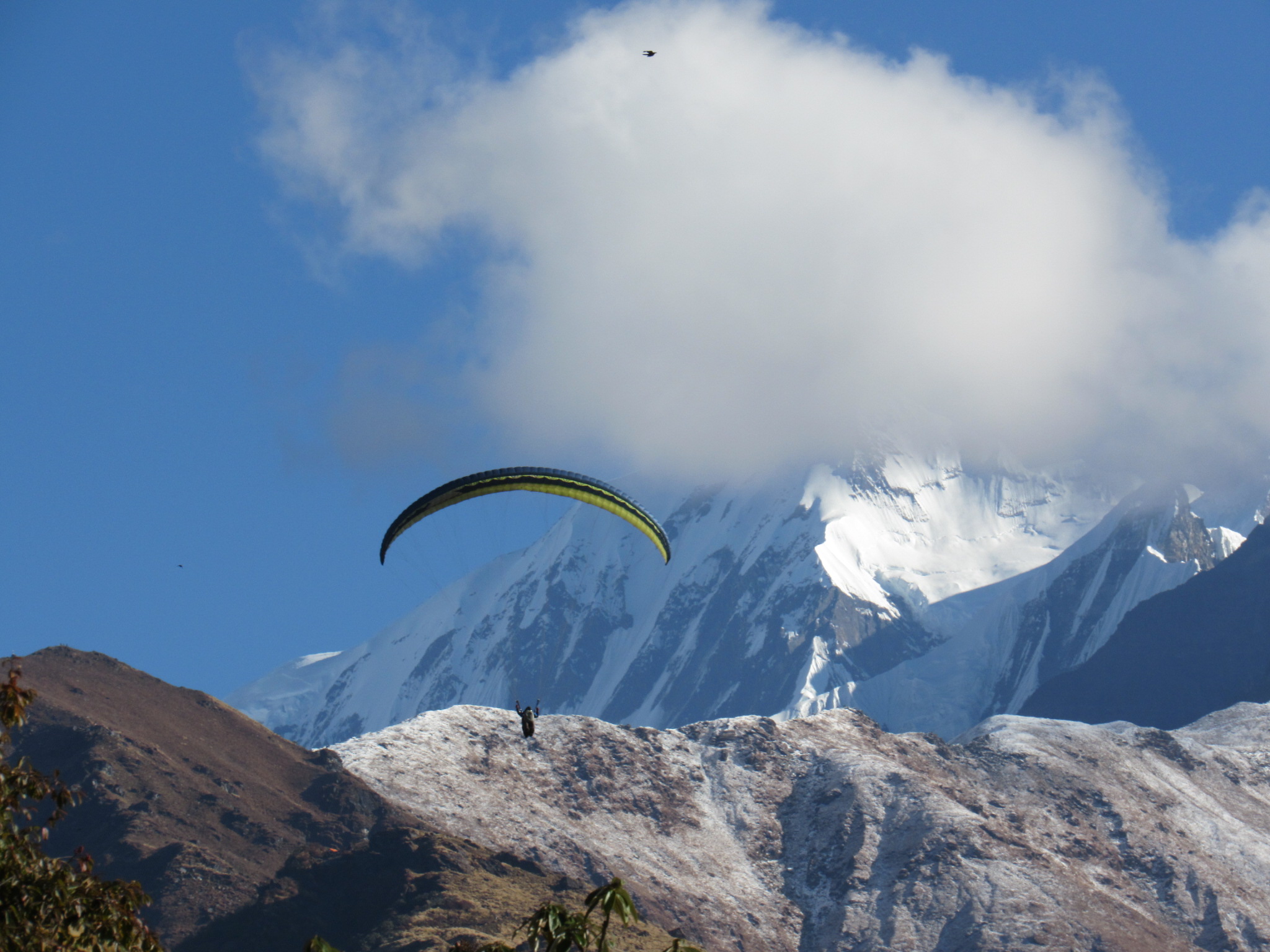
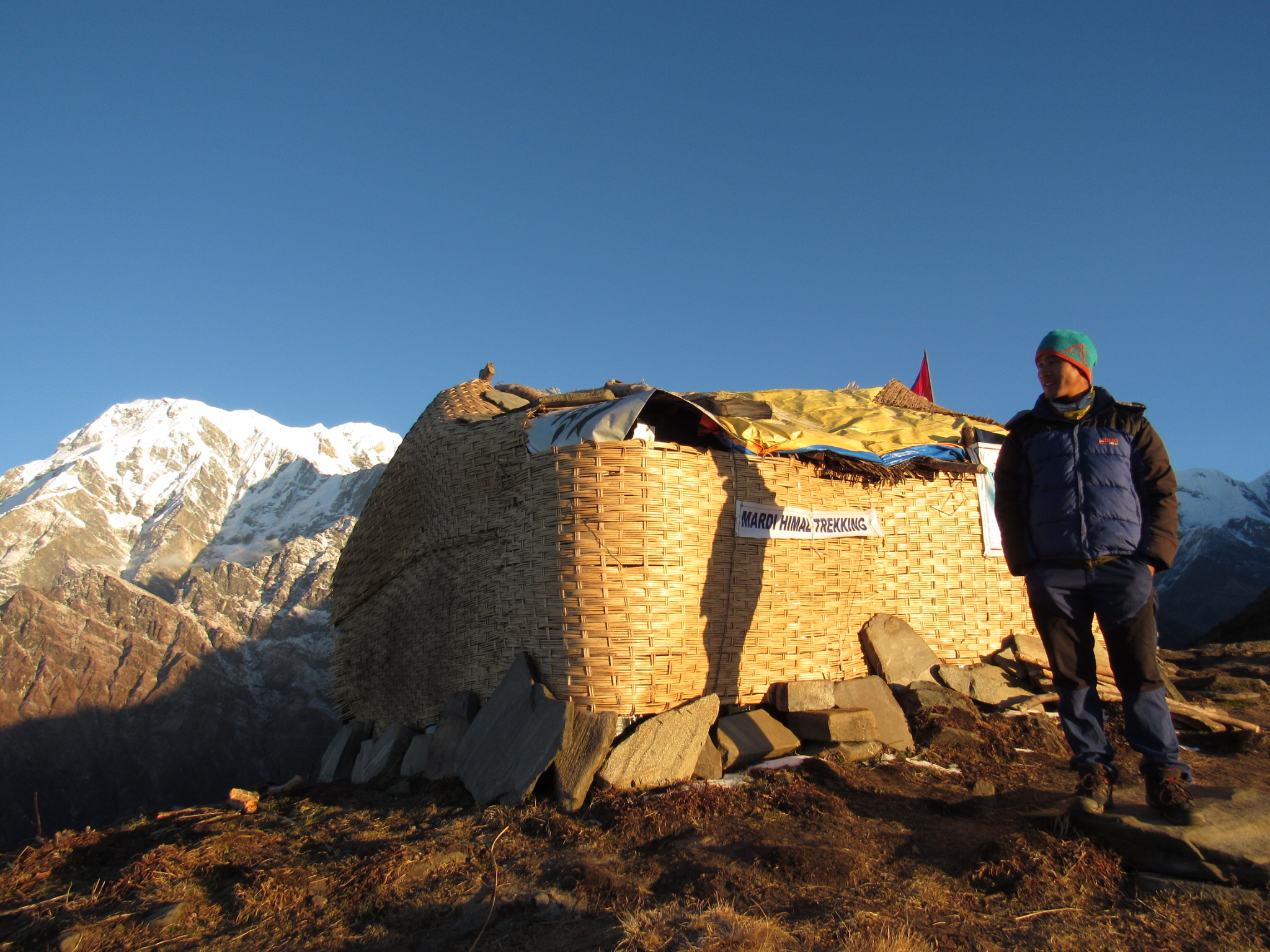

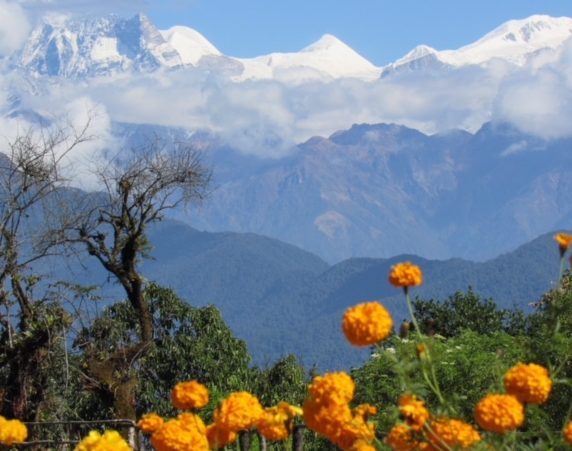
I love your photos and your commentary. What a wondrous trek.
Thank you! So happy to hear you’re enjoying! It really was an amazing experience!
What a beautiful summary of our trip! Just gorgeous.
Thank you! So nice hearing from you! An “awesome” 😉 trip for sure!
I loved sharing in your Trek. The mountains and all what a vision of Glory!
Great to hear you enjoyed it! Thank you! Next is one about the lovely and diverse Nepalis – Namaste
Really loving these posts; I feel like I’m experiencing these wondrous mountains.
Happy to hear you’re enjoying!